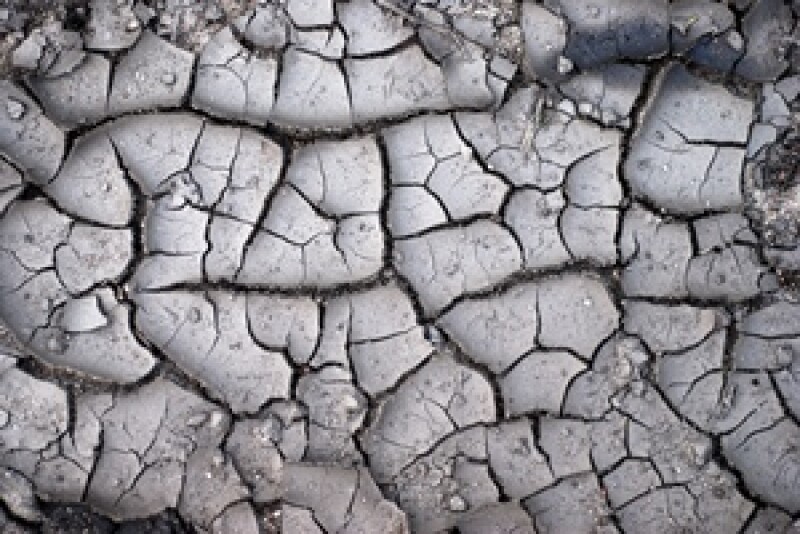As of Oct. 25, 84% of the U.S. was experiencing abnormal dryness/drought, according to the U.S. Drought Monitor, up two percentage points from the previous week. While many areas of the western and central U.S. received some rains, “antecedent dryness led to another week of degradations for many not receiving rainfall, even in areas where temperatures were cooler than normal this week. Warm conditions and high winds further exacerbated conditions in drier areas across the Great Plains. Fortunately, in areas seeing the heaviest rainfall amounts, particularly across the Southern Plains and Ozarks, some improvements were also warranted.”
USDA estimates the drought footprint covers 74% of winter wheat acres (up 4 points from last week).
In HRW areas, dryness/drought covers 82% of Colorado (up 5 points), 100% of Kansas (up 1 point), 90% of Montana (unchanged), 100% of Nebraska (unchanged), 100% of Oklahoma (unchanged), 100% of South Dakota (unchanged) and 93% of Texas (unchanged).
In SRW areas, dryness/drought covers 100% of Missouri (unchanged), 90% of Illinois (up 14 points), 100% of Indiana (unchanged), 73% of Ohio (up 14 points), 41% of Michigan (unchanged), 99% of Kentucky (up 13 points) and 91% of Tennessee (up 12 points).
For the Plains, the Drought Monitor noted: “Above-normal temperatures, below-normal precipitation, and periods high winds resulted in degradations to ongoing D1 (moderate) to D4 (exceptional) drought across the Central Plains, east of the Front Range. Stock ponds for cattle remain low to non-existent and pastures are providing marginal feed, with supplemental feed required for many. Conversely, the storm system that moved across the Intermountain West during the weekend dropped heavy precipitation across the higher elevations of Wyoming and Colorado and parts of the Northern High Plains from Montana eastward to North Dakota. Unfortunately, even though several areas experienced in excess of 1 inch of precipitation (greater than 1.5 inches for many locations across the Northern High Plains), short to long-term drought indicators did not show many signs of improvement by Tuesday, October 25. Only surface soil moisture showed some improvement, with sparse 7-day average stream flows also improving, corroborated by ground reports. As such, given the lack of response in the indicators, much of the Northern High Plains remain unchanged this week.”
For the South, the Drought Monitor stated: “A storm system moving out of the Rockies and intensifying across the Southern Plains dropped in excess of 2 inches of rainfall in a large swath from northeastern Texas to the western Ozarks, warranting 1-category improvements across many of these locations. In surrounding areas that received heavier precipitation amounts, improvements were more targeted in nature, as amounts were not enough to eliminate 90-day deficits. Farther eastward, from the Lower Mississippi Valley to the Tennessee Valley, antecedent dryness and a drier than normal week resulted in another round of widespread 1-category degradations.”
For the Midwest, the commentary noted: “In similar fashion as the Southern Region, antecedent short-term (30 to 60-day) dryness has resulted in the widespread expansion of abnormally dry (D0) and moderate (D1) to severe (D2) drought conditions. Given the much of the region experienced above-normal temperatures and below-normal precipitation again this week, it warranted another round of 1-category degradations, particularly across the Ohio Valley. Soil moisture ranks in the bottom 20 percent of the historical distribution, according to various soil moisture products. In addition, 30 to 60-day standardized precipitation indices (SPIs) range anywhere from D1-equivalent (moderate drought) to D4-equivalent (exceptional drought), with 30-day SPIs indicating the more severe designations. Parts of Missouri and the central Corn Belt were the only areas that received enough rainfall to improve drought conditions or stop ongoing degradation this week. More than 2 inches of rain fell across the western Ozarks leading to broad 1-category improvements to the drought depiction in affected areas, as rainfall totals improved short-term precipitation deficits and topsoil moisture and 7-day average stream flows responded favorably.”

